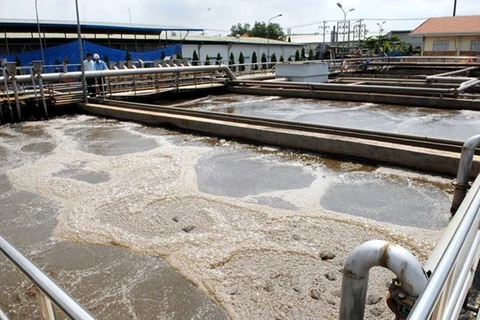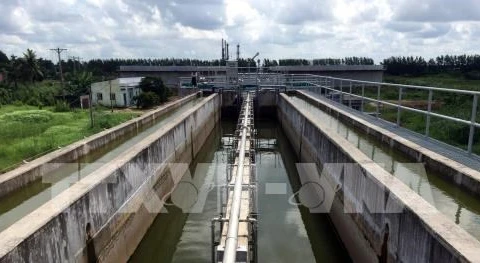HCM City (VNS/VNA) – Ho Chi Minh City has set a target of treating 90 percent of discharged water into rivers and canals by 2020.
The city’s total daily wastewater, including wastewater from industrial parks as well as in residents, amounts to 1,750,000 cubic metres.
HCM City now can treat 420,000 cubic metres of wastewater per day, accounting for 24 percent of the city’s daily wastewater.
To meet this target, city authorities said they would set up 24 automatic water quality monitoring systems along the Sai Gon – Dong Nai River.
Most of the water in rivers and canals met city norms, expect the amount of dissolved oxygen and coliform, according to the water quality report in the first quarter.
Factories and industrial parks which discharge over 1,000 cubic metres of wastewater a day must set up automatic measuring stations directly linked to the Department of Natural Resources and Environment.
The city plans to continue monitoring all wastewater treatment systems at industrial parks, processing zones, high-tech parks and industrial clusters.
By 2020, it targets collection and treatment of all industrial and medical liquid wastes and 90 percent of industrial fumes.
It also aims to reduce surface water pollution by 90 percent and air pollution by 70 percent in comparison with 2011.-VNS/VNA
The city’s total daily wastewater, including wastewater from industrial parks as well as in residents, amounts to 1,750,000 cubic metres.
HCM City now can treat 420,000 cubic metres of wastewater per day, accounting for 24 percent of the city’s daily wastewater.
To meet this target, city authorities said they would set up 24 automatic water quality monitoring systems along the Sai Gon – Dong Nai River.
Most of the water in rivers and canals met city norms, expect the amount of dissolved oxygen and coliform, according to the water quality report in the first quarter.
Factories and industrial parks which discharge over 1,000 cubic metres of wastewater a day must set up automatic measuring stations directly linked to the Department of Natural Resources and Environment.
The city plans to continue monitoring all wastewater treatment systems at industrial parks, processing zones, high-tech parks and industrial clusters.
By 2020, it targets collection and treatment of all industrial and medical liquid wastes and 90 percent of industrial fumes.
It also aims to reduce surface water pollution by 90 percent and air pollution by 70 percent in comparison with 2011.-VNS/VNA
VNA























